- Home
- Anne Lamott
Grace (Eventually) Page 3
Grace (Eventually) Read online
Page 3
The hardest part came next, when I tried to get the boys to sit quietly for a story from the Bible. I don’t want them to feel sentenced to Sunday school: I want, if nothing else, for them to relax their bodies, remember that they are loved and chosen, and hear a great story, because that is how they seem to learn best.
The kids love stories that involve dead people. It’s one of the spiritual dimensions that they desperately need to have addressed, the incomprehensible fact that someone is there, and then is not. How can this possibly be, and how can you go on without the dead person? I don’t have an answer. There are deaths I’ve not gotten over yet; but somehow, over time, the acute helplessness of death has become merely painful.
I read them a short version of the story of King David establishing his throne in Jerusalem so that the people of Israel finally had a home in a great city, after the chaotic nomadic life they’d always been living. Before, they’d had to carry the sacred Ark of the Covenant around like so much camping gear. And David’s son, wise King Solomon, built a temple.
This was where the Jews flocked to worship. It was supposed to help them stay focused on God and turn their attention away from the distractions outside, and from the idols of the surrounding nations. It was a place where God could hear the cries and prayers and joys of His people, a place of refuge. It was supposed to last forever. Four hundred years later, though, bad guys came from the north, the warriors of King Nebuchadnezzar, and destroyed it, capturing or killing all the Jews they could.
I paused to look at the class: two of the boys looked utterly undone, the rest looked stoked.
“But one great wall remains to this day,” I said. “It’s the wall in this one photo, where the boy and his father are sticking a prayer into the cracks. I want you to try to feel a connection between yourselves and the children who came to the wall in ancient times, asking God for help, trusting in His love.”
The kids listened pretty well, except for Frederick, who moved sneakily around the room like an incompetent spy. I guided him back to his mother’s lap. I wanted to whisper something to him that I’d seen on a bumper sticker that week: that only one six-billionth of this was about him. But the lesson was on Letting Go: so I gritted my teeth winsomely.
“What does letting go mean?” I asked. The boys looked around at one another, worried as cats. “Let me show you,” I said, and gripped two colored markers, one in each hand. “What if, when we go in for our snacks, someone offers me a juice box, and I won’t let go of these pens, even though I’m thirsty.” I told them to watch, and you’d have thought I was doing a magic trick as I slowly unfurled my fingers and let the markers drop.
We all thought hard about this. “So why would you want to let go?” I asked.
One of the six-year-olds answered, “Because you’re thirsty?”
“Bingo!” I cried. Thank you, Jesus! This was suddenly the most successful class I’d ever taught. “See, sometimes, if you’re lucky, you get to a point where you’re sick of a problem, or worn down by tinkering with it, or clutching it. And letting it go, maybe writing it down and sending it away, buys you some time and space, so maybe freedom and humor sneak in—which is probably what you were praying for all along.”
Then I put the supplies on the floor. Frederick grabbed at a pair of safety scissors, and after I took them away, I sent him to his mother and got down on the floor beside my materials. He began to cry, and just like that the center stopped holding, and one of the six-years-olds, horsing around, fell out of his seat and landed on my head. I shouted in surprise, because he’d hurt my neck. After a moment, I realized I was fine, but I turned the class over to Neshama and went outside to compose myself.
I dropped my chin to my chest and rubbed my neck. I felt like a weed, like one of those orange flowers that have sprung up lately, bowed like fiddlehead ferns, and underneath resembling beautiful Chinese dragons: Grrr.
Finally I looked up, at my church. I needed the grown-up service so badly, the singing, the prayers, the silence, and especially the very low incidence of injury. Sometimes it’s as still as a forest, sometimes a person speaks words of wisdom and comfort, and no one in twenty-one years has hurt me. The music moves you along, you rise and you sit and rise and sing and float, and you open your mouth and let the sound come out. No matter that you may sing poorly, and fumble around with the hymnal, and sing the wrong words, the hymn expands to make room for all the voices, even yours.
We clap a lot at my church—it punctuates the air and chases the devil away. So I took a deep breath, stepped back into the classroom, and clapped for attention.
I passed around the pictures of people at the Wailing Wall that I’d printed. I showed the boys the moss and grass growing in the cracks, and the prayers on paper sticking out. I let them study these, and then I explained that we were going to build a wall for the people of our church, where they could scribble notes to God to help them let go.
We all got down on the floor together. I handed out paper replicas of the limestone blocks that make up the wall, gray, brown, and sand-colored. We crumpled them up to make them more realistic, and stomped on them to burn off excess energy. I gave everyone safety scissors, even Frederick.
I got a piece of poster board, and the greatest invention in the history of Sunday schools everywhere—glue sticks.
We pasted our blocks to the poster board, and taped on strips and wads of green construction paper to represent the wonder of vegetation breaking through the cracks. Then we wrote, right on the blocks, the names of people we loved who were suffering—grandparents, people in nations at war—and then the names of new babies and of pets who had died. While we worked, we had wailing and muttering practice.
I asked Neshama whether she had anything to add about letting go. She put down her glue stick and said, “Maybe turning things over is not the solution to everything, but…” She shrugged Hasidically. “You do what you can. Then you get out of the way, because you’re not the one who does the work.”
How much of the lesson did the children take in that day? I can’t answer that, and besides, I wasn’t in charge. But it all comes to dropping a few seeds on the ground. If the soil is ready, the seeds will grow, and if not, you could have the Archangel Michael buzzing around the room in a thong and the kids still won’t get it. At any rate, we all ended up on the floor with our butts in the air, like ducks feeding in the shallows of a marsh.
Dance Class
One night recently, Neshama and I agreed to be helpers at my friend Karen’s special-ed dance class. Neshama wanted to go because she is a lifelong dancer—modern, ballet, Bolinas tribal stomp. Perhaps some of you caught her act during the sixties, when she performed at a nightclub doing the Hippie Dance of Love. She is short, sixty-five, with fuzzy hair like mine. We’ve been friends since I was twenty-one and drinking heavily, in Bolinas, where we both lived. I am forty-eleven now, sober twenty years, and have moved ten miles away, to another small, tie-dyed town closer to San Francisco.
One thing I love about Neshama is that, like Karen, she is willing to try anything that affords you the opportunity to shake up the Etch A Sketch of everything you suppose is true, a chance to question all your secret opinions: that this thing is good, that one is bad; that this person is better, that one is worse. I truly—or at least sort of—believe that we are all family, created of the same stuff, and that what is true for one of us is true for most of us. I pretend to believe that deep down, Donald Rumsfeld is just as innocent in God’s eyes as a newborn: I think my believing in his innocence should count for something—if not for full credit in heaven, then at least a few bonus snack coupons. At the same time I secretly believe that God must love people with developmental disabilities much more than He loves people like me or Rumsfeld, because they are more innocent, and did not bring their problems down on themselves.
And yet, having confessed this, I know that humans want and need exactly the same thing: to belong, to feel safe and respected. I also know that we don�
�t live long. And that dancing almost always turns out to be a good idea. Rumi wrote, “Whatever there is, is only He, / your footsteps there in dancing: / The whirling, see, belongs to you, / and you belong to the whirling.” I’m not any good at dancing, but Karen, in Coyote Trickster mode, got me to show up by promising I’d get to be a helper.
So there I was in dance class. There were eighteen adults, of various ages and degrees of disability, in the room at the rec center. I had seen many of them before, at the Special Olympics, bagging groceries at Safeway, and on the streets of Marin, alone at bus stops or walking together. They wore the most tragically terrible clothing you could imagine, plaids coordinated with paisleys and bright florals, like wild and crazy guys. Karen introduced Neshama and me as that evening’s helpers, and everyone murmured and hummed and exclaimed, “The helpers!” They came to shake our hands or to stare at us close-up, with awe. You’d have thought Paula Abdul had arrived. Some of them told us their names, and several asked if we were going to dance.
“Yes,” Neshama responded, although I had assumed I might help in a more ministerial way.
Many people with Down’s syndrome look like family, like relatives of one another, while autistic people look more like the rest of us, if a little tense. Within ten minutes, I discovered that when I spoke to the people in dance class, the veil of illusion kept dropping—the ones who looked most like “the rest of us” were often the least available for ordinary human contact, while the ones who looked seriously different were often the most responsive and engaged. One of the two prettiest women seemed very high-functioning, in a bossy, controlling way, while another pretty one seemed to be hanging in an invisible hammock strung between here, and, well, there. Karen had warned me that you had to keep your eyes on one very shy, spherical Down’s-syndrome woman, who’d earned a reputation for performing dances that began innocently but degenerated into cartoonishly lewd stripteases. Once, at Christmastime, she’d gotten down to her undies while grinding along to Brenda Lee’s version of “Jingle Bell Rock.” But hey, who hasn’t?
We formed a circle and introduced ourselves again to the people around us, formally, as if we were about to square dance, do-si-do. Handshakes were mannerly and respectful—it was like being presented to grateful visitors from another planet: “You have come all this way. I take your hand, I look you in the eye. We come in peace.” One of the men was huge and reminded me of somebody behind a butcher counter: sweaty, with a mustache disorder, a big gut, a baseball cap. Another wore a Giants T-shirt he had obviously mended himself, with a frayed rope over it, like a confused belt. A number of the people reminded me of sober men and women who once helped me, or people whom I’ve tried to help, but with a lot fewer tattoos.
I’m not comparing the hardship of being developmentally disabled to that of being an alcoholic or a drug addict, but in dance class, I noticed all sorts of parallels: the off-rhythm gait, the language you can’t quite catch, the lack of coordination, the odd affects—too friendly or too far away—the bad teeth, the screwed-up relationships or no relationships at all, the not-fitting-in-ness. It’s incredibly touching when someone who seems so hopeless finds a few inches of light to stand in and makes everything work as well as possible. All of us lurch and fall, sit in the dirt, are helped to our feet, keep moving, feel like idiots, lose our balance, gain it, help others get back on their feet, and keep going.
After introductions, we did wiggly warm-up stretches to classic James Brown, and when the music ended, everyone in the circle spun around like the Godfather of Soul, while screaming, “Aaawwhhhooohhh.” I was pretty good at this. So was a young woman with cerebral palsy, spinning in a wheelchair, grinning, her twiggy fingers curled into somehow sweet claws. The stretches were hard for the heavier dancers, which was about half the class. They struggled like beautiful, ungainly marine mammals, with short limbs and uncooperative bulges. But in wiggling, all people shine.
Then it was time for sharing.
We sat in a circle and were invited to share only one thing about ourselves: Karen had told me that she’d recently had to add this “only one thing” rule to put an end to long gossipy stories, some of which were hatchet jobs on other people who were present in the room. She invited everyone to share sad or scary stuff with her privately, after class. Most people talked about their relatives, sometimes angrily—“No, my niece still can’t speak yet because she is only eight months old!”—and sometimes with pride: “My nephew graduated from high school Saturday, and now he is going into the Marines. And he’ll be in charge!” They acted a lot like my relatives: interrupting and bossing one another, listening, jostling, showing off, arguing, trying to get extra attention. A number begged to share “just one more thing.” Some of them were willing to make exceptions, cut people a little slack. Others grew sullen, or were on the verge of tears with worry when people didn’t stick to the rules.
It turned out that most of them attend Weight Watchers together every week, and this was another One Thing they wanted to share, either with elation—“I lost one pound!”—or tearfully—“I gained one-point-three pounds.” It made me laugh about my own bad dieting days, like, say, my thirties. I know how it feels. During the worst of it, if I discovered that I had gone from 140 to 139.6, I felt triumphant; if the opposite happened, panic rose in my throat, and I had to stuff it back down with food.
I will never know how hard it is to be developmentally disabled, but I do know the sorrow of being ordinary, and that much of our life is spent doing the crazy mental arithmetic of how, at any given moment, we might improve, or at least disguise or present our defects and screw-ups in either more charming or more intimidating ways.
With half an hour left, it was time for the actual dance instruction. I thought it would be like doing the hokey-pokey, but there were some tricky moves. The first was kick-ball-pivot, which has nothing to do with playing kickball, but is a modern dance step. First you kick one foot, then put the ball of that foot on the floor. Then you do a pivot turn. It’s surprisingly hard. I couldn’t do it right. I cheated. I just turned. My entire childhood flashed before my eyes: trying and failing to learn cheerleading moves, water ballet, chemistry.
Mercifully, Karen announced it was time for the electric slide, a version of a line dance you might see in bars or on reruns of Soul Train. You begin by tapping your feet three times—which I was good at. Excellent, really. Then the Raisin Bran scoop, where you scoop the air twice. Then some wiggles, and a pivot turn—that infernal pivot turn! Then you move forward, everyone together, pushing the air as if clearing a path, backing up to where you started, quacking, for some reason. Then…the pivot turn. Tap, scoop, wiggle, pivot, turn, push, quack, pivot.
The magnificence of the dance is in their faces.
We sat down in a circle again, so people could do solos or ensembles in the center. The first solo was by the woman with cerebral palsy, who during the group practice had done great swooping turns in her wheelchair. For her solo, she sat smiling ecstatically and twitched her gnarled hands in time to the music. She was great. So was the music, a Congolese song called “Soweto.” The next dancer, an older woman, earnestly counted her every step out loud, evidently unbothered that none of the steps coincided with the music, her jaw set with a determination that bordered on hostility. Then a blonde woman with Down’s syndrome performed what I at first thought were gymnastics: a somersault that pretty much got away from her, and a unique cartwheel—palms flat on the floor, then rocking back onto her bottom, then falling over sideways—and then jumping up and down in a one-legged crouch. Karen later told me that this was intended to be break-dancing, a weekly performance by the woman’s alter ego, Homegirl from the ’Hood.
After the solos, ensembles of four or five did the Electric Slide together. I joined in with one group. I was great; everyone said so.
And then it was time to go. People shook our hands and thanked us. The gymnast gave me a hug with her head pressed into my waist. Neshama and I left feeling elated a
nd surprisingly tired. It had been only an hour, but it was an immersion. It went deeper than I had thought.
When Karen and I were hiking a few days later, she told me that after class, one of the dancers had exclaimed, “I liked those old ladies! They were helpers, and they danced.” These are the words I want on my gravestone: that I was a helper, and that I danced.
Bodies
The bud
stands for all things,
even for those things that don’t flower,
for everything flowers, from within, of self-blessing;
though sometimes it is necessary
to reteach a thing its loveliness,
to put a hand on its brow
of the flower
and retell it in words and in touch
it is lovely
until it flowers again from within, of self-blessing;
as Saint Francis
put his hand on the creased forehead
of the sow, and told her in words and in touch
blessings of earth on the sow, and the sow
began remembering all down her thick length,
from the earthen snout all the way
through the fodder and slops to the spiritual curl of the tail,
from the hard spininess spiked out from the spine
down through the great broken heart
to the sheer blue milken dreaminess spurting and shuddering
from the fourteen teats into the fourteen mouths sucking and blowing beneath them:
the long, perfect loveliness of sow.
—GALWAY KINNELL
“Saint Francis and the Sow”
The Muddling Glory of God
We moved into our current house six years ago, when Sam was ten. In the old house, our bedrooms had been very close, but in the new place, we were separated by two rooms and two short hallways. He started coming into my room in the middle of the night, curling up on my bed with his own blanket. I tried the obvious ways of helping him get his confidence back—a night-light, bribes, Power Ranger sheets. Nothing worked.

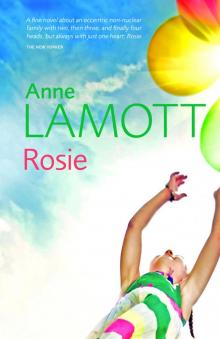 Rosie
Rosie Crooked Little Heart
Crooked Little Heart Bird by Bird: Some Instructions on Writing and Life
Bird by Bird: Some Instructions on Writing and Life Operating Instructions: A Journal of My Son's First Year
Operating Instructions: A Journal of My Son's First Year Plan B: Further Thoughts on Faith
Plan B: Further Thoughts on Faith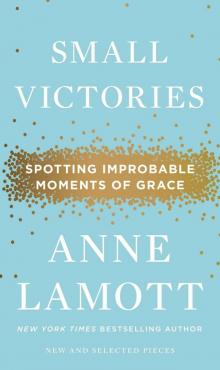 Small Victories: Spotting Improbable Moments of Grace
Small Victories: Spotting Improbable Moments of Grace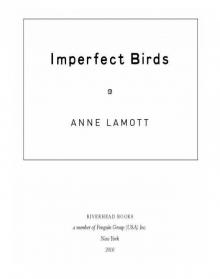 Imperfect Birds
Imperfect Birds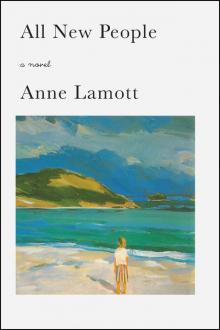 All New People
All New People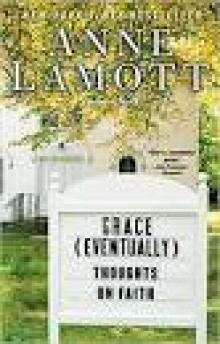 Grace (Eventually)
Grace (Eventually)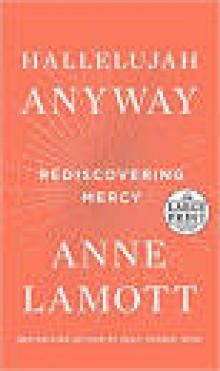 Hallelujah Anyway
Hallelujah Anyway Operating Instructions
Operating Instructions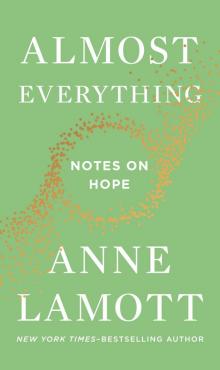 Almost Everything
Almost Everything Blue Shoe
Blue Shoe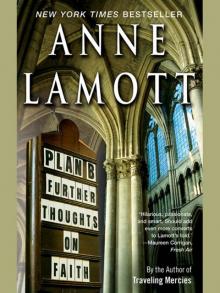 Plan B
Plan B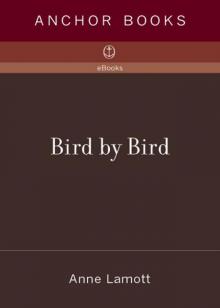 Bird by Bird
Bird by Bird